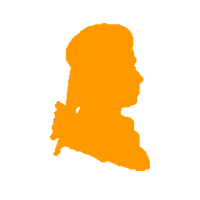When Gabriel Fauré was a boy, Berlioz had just written
La damnation de Faust and Henry David Thoreau was
writing Walden. By the time of his death, Stravinsky
had written The Rite of Spring and World War I had
ended in the devastation of Europe. In this dramatic
period in history, Fauré strove to bring together the
best of traditional and progressive music and, in the
process, created some of the most exquisite works in
the French repertoire. He was one of the most advanced
figures in French mu...(+)
When Gabriel Fauré was a boy, Berlioz had just written
La damnation de Faust and Henry David Thoreau was
writing Walden. By the time of his death, Stravinsky
had written The Rite of Spring and World War I had
ended in the devastation of Europe. In this dramatic
period in history, Fauré strove to bring together the
best of traditional and progressive music and, in the
process, created some of the most exquisite works in
the French repertoire. He was one of the most advanced
figures in French musical circles and influenced a
generation of composers world-wide.
Fauré was the youngest child of a school headmaster
and spent many hours playing the harmonium in the
chapel next to his father's school. Fauré's father
enrolled the 9-year-old as a boarder at the École
Niedermeyer in Paris, where he remained for 11 years,
learning church music, organ, piano, harmony,
counterpoint, and literature. In 1861, Saint-Saëns
joined the school and introduced Fauré and other
students to the works of more contemporary composers
such as Schumann, Liszt, and Wagner. Fauré's earliest
songs and piano pieces date from this period, just
before his graduation in 1865, which he achieved with
awards in almost every subject. For the next several
years, he took on various organist positions, served
for a time in the Imperial Guard, and taught. In 1871
he and his friends -- d'Indy, Lalo, Duparc, and
Chabrier -- formed the Société Nationale de Musique,
and soon after, Saint-Saëns introduced him to the
salon of Pauline Viardot and Parisian musical high
society.
"Le papillon et la fleur" (The butterfly and the
flower) Opus 1 No. 1: Fauré begins his song-writing
career with a pianistic carte de visite. A ritornello
is launched with élan (one ascending C major scale,
then another – a musical commonplace adapted for
lepidopteran acrobatics) followed by sequences that
spiral downwards in waltz rhythm. The song is usually
chattered in a fast tempo (and in a bright D major
transposition) that emphasizes its glittering
superficiality. In the lower, original, key there is
room for a touch of sadness and vulnerability; we can
see a lovesick teenager rooted to the spot and not yet
able to quench the thirsts of adolescence. The cover of
the autograph (where the composer takes more pains in
the penmanship of the title, La fleur et le papillon,
than in the setting’s prosody) contains an amusing
sketch of a flower with tiny arms looking up to a
hovering butterfly wearing a crown. This was drawn by
Saint-Saëns, Fauré’s teacher at the École
Niedermeyer, who was clearly bemused by his pupil’s
achievement. The poem, No XXVII in Hugo’s Chants du
crépuscule has no title in the first edition. Perhaps
the composer knew the text from Henri Reber’s modest
setting of 1847.
Source: AllMusic
(https://www.allmusic.com/artist/gabriel-faur%C3%A9-mn0
000654108/biography)
Although originally composed for Voice (Soprano) and
Piano, I created this arrangement of "Le papillon et la
fleur" (Op. 1 No. 1) for Viola & Piano.
















 SHEET MUSIC
SHEET MUSIC